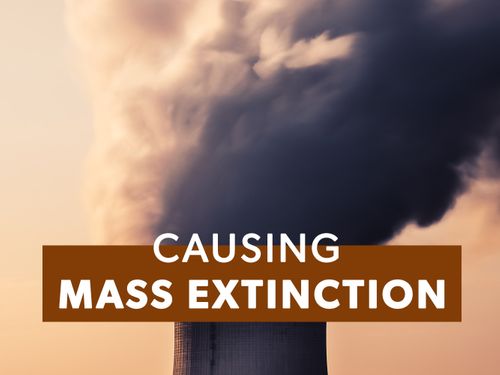Are we causing Earth’s sixth mass extinction?
Sep 13, 2021 · 2 mins read
0
Share

Archeologists recognize 5 mass extinctions, beginning over 400 million years ago 1) Ordovician: Extinction of 85% of marine species. 2) Devonian: Extinction of most reef-building organisms.
3) Permian: The largest extinction of insects. 4) Triassic: Extinction of 30% of marine l
Save
Share
All of the “Big Five” extinctions were due to natural causes such as volcanic eruptions, asteroid crashes or weather changes. Scientists now predict that humans may be the cause of the next mass extinction of endangered species due to overhunting, deforestation and ocean acidific
Save
Share
The concept of extinction dates back to the early 1800’s. Prior to this time, scientists assumed that all species that had ever lived were, in fact, “out there somewhere”. Even President Thomas Jefferson was convinced that Mastodons would be found in the United States.
Save
Share
Each year a third of CO2 emissions released from cars, factories, etc. ends up in the oceans. That’s 10 billion metric tons of gas which lowers the PH level and changes the environment for all marine life. At the current rate of acidification, ⅓ of ocean life will not survive the
Save
Share
Amphibians are the world's most endangered class of animals. Some scientists believe their extinction is already happening. This can be seen in Panama where areas that had been teeming with frogs now have little to none. Australia also has common frogs which have nearly vanished.
Save
Share
Today about 25% of all mammals are considered endangered. In addition, 40 percent of amphibians are considered endangered, and all reef-building organisms are considered very endangered due to rising ocean temperatures.
Save
Share
The New Pangaea effect refers to how human advancement in travel has effectively reversed some of the effects of the separation of the ancient supercontinent Pangaea. This means that humans introducing foreign plants and animals can cause whole animal populations to go extinct.
Save
Share
One example of the New Pangaea effect is the Brown Tree Snake which was introduced to Guam via WW1 military cargo. Because the snake had no predators on the island, it quickly devoured many small species of rodents, birds, bats and reptiles. The snakes also reproduced quickly and
Save
Share
It’s possible that humans could end up with a similar misfortune as the dinosaurs. Sweeping environmental changes that make the dominant species extinct are not unusual. Scientists theorize that creatures that thrive despite human interference, like the rat, may outlast us.
Save
Share
Following extinctions, there are millions of years when the biodiversity and environment is drastically changed. It takes ages to restore the previous levels. And with every change it’s never clear what the long term outcome will be. The “Anthropocene Extinction” we’re in could h
Save
Share
0